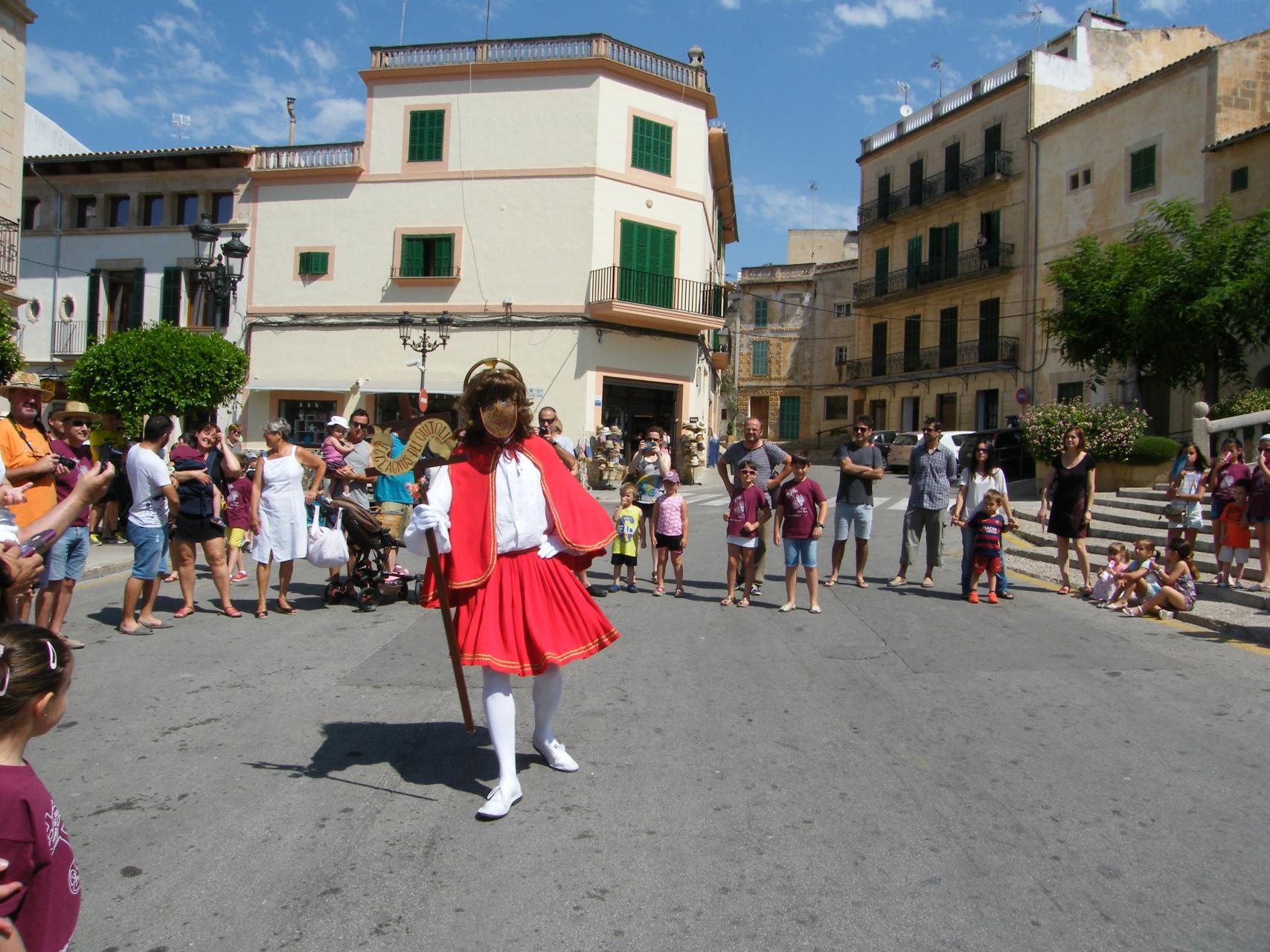María Isabel Francisca de Asís Cristina Francisca de Paula Dominga de Borbón y Borbón was the eldest daughter of Isabel II, who was overthrown as a consequence of the Glorious Revolution of 1868. While her mother was to spend most of the rest of her life in exile in Paris, María Isabel returned to Spain and was a dutiful representative of the crown once it was restored at the end of 1874.
She was, by all accounts, a popular and respected member of the royal family, but this popularity was to be greatly tested in the village of Felanitx, which was where she happened to be in the summer of 1913.
So the story goes, it was a hot day. The Infanta Isabel was tired because of the travelling. Nevertheless, the mayor of Felanitx felt obliged to lay on entertainment to celebrate the presence of such a notable royal visitor. Local musicians were gathered to accompany a young man of the village. He was of “hairy appearance” and was commanded to dance for the Infanta. To say that she was not amused would be an understatement.
The least offensive way of translating what she had to say would be that she demanded to know who “the jerk” was doing the dancing. Infanta or not, generally popular or not, the villagers were outraged. From that day on, it was determined, the young man of hairy appearance would dance for no one other than the villagers. Sant Joan Pelós, Saint John the Hairy, had claimed a place in history - a Mallorca fiesta act who had managed to offend a prominent member of the Bourbon family.
The current-day Bourbons don’t arrive in Mallorca for their summer holidays until July. They are therefore unlikely to ever be entertained by a young man of hairy appearance on June 24. Were they to be, their reaction would doubtless be far more enthusiastic than that of the Infanta Isabel. Young men of hairy appearance are nowadays two a penny, even if they don’t necessarily cavort on the streets of Felanitx, but the enthusiasm would be assured, as the royals would be advised that Sant Joan Pelós is now a fiesta in the cultural interest. The Council of Majorca has deemed him to be.
It is in a way curious that the figure of Sant Joan Pelós and his dance should have merited this declaration, as there otherwise isn’t a fiesta for Sant Joan in Felanitx. A young man dressed in a red silk skirt and cape with a mask and a brass crown cavorts on just the one day of the year - the feast of the Baptist - and when the dance ends, carnations are handed out to spectators. It’s all a bit flower power, what with a hippy idiot dancing - too much indeed for an Infanta raised in the Spanish court of the nineteenth century.
The dance is course steeped in long-ago folk tradition. With the musical accompaniment of guitars, lutes, castanets, fiddle, whistle and drum, it is in similar vein to the dances of the cossiers. But Sant Joan Pelós dances alone, his hairiness now defined by his wig; the “pelós” comes from the time when he wore a hairy cape. The dance has some similarities with others, but the current John says that it isn’t choreographed; he just goes with the flow of the music.
A further curiosity lies with the fact that the Felanitx John isn’t unique. Sant Llorenç has one, and he - just to add further curiosity - is known as Sant Joan Pelut, doesn’t have a mask and isn’t in the least bit hairy. The Pollensa Sant Joan Pelós is far closer in appearance, but he doesn’t dance for the feast of John the Baptist; it’s for Corpus Christi.
And Corpus Christi is how the dances originated, but even then one has to go further back to discover that there were roots at Christmas, not in midsummer. Until at least the sixteenth century, there was a representation of John the Evangelist at Palma Cathedral on his feast day (December 27). He wore a veil of white silk over his face. John the Baptist was added to this ritual, and he wore a hairy cape and sandals. Evangelist and Baptist merged and were incorporated into the Corpus Christi ceremony, the representation of the Baptist dominating.
Whereas Pollensa has stuck with Corpus Christi down the centuries, Felanitx opted for the saint’s day, and there has been a dance since at least 1757, the good people of Felanitx nowadays not in the least bit minded if outsiders are in attendance when he dances. Except perhaps this year. Town halls aren’t actively encouraging loads of people to attend fiesta events, and Sant Joan Pelós will be confining his cavorting to just the one square and not several. Limited in scope he may be, but he is still in the cultural interest. Heaven knows what the Infanta Isabel would have made of such a declaration.


No comments
To be able to write a comment, you have to be registered and logged in
Currently there are no comments.